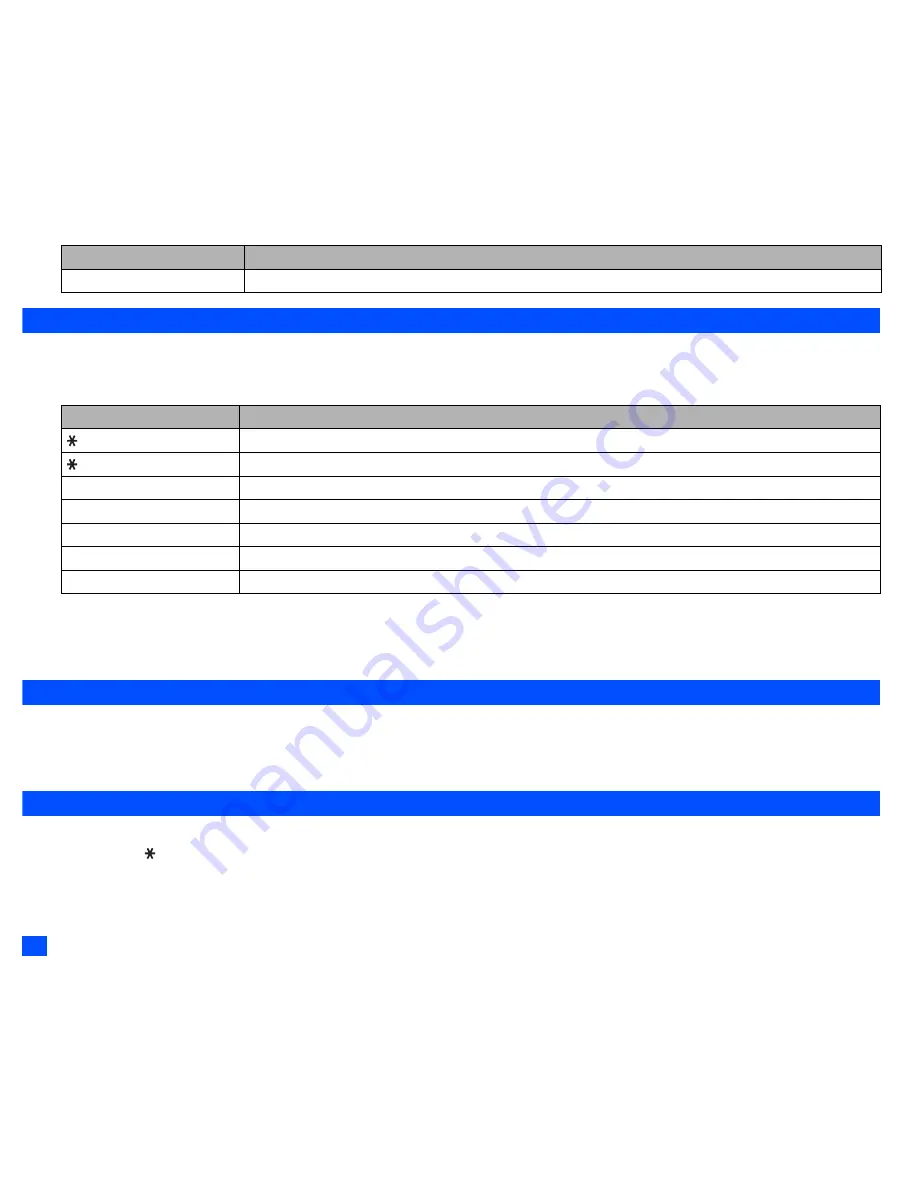
16
Normal text input
☛
With a text entry screen displayed, press SK1 until the entry mode is Normal text (ABC) input.
☛
Use alphanumeric keys to enter letters. For example, to enter “e,” press 3 twice; to enter “f,” press 3 three times. For other functions, see the table
below.
2
If you have made a mistake, use
▲ ▼
to place the cursor to the right of the incorrect character and then press CLR.
2
When entering normal (ABC) text, and the character you require is displayed, use to move to the next character position (if you wait for more than
1 second, the cursor will move one character to the right automatically).
Numeric input
☛
With a text entry screen displayed, press SK1 until the entry mode is Numeric input.
2
You can also press and hold the number key to insert the number in T9/Normal text input mode.
☛
Use alphanumeric keys to enter numbers.
Key allocations
Whenever you need to enter text (for short messages, storing names with numbers, etc.), successive presses of an alphanumeric key will display different
characters. Pressing in T9
®
English text input or Normal text (ABC) input toggles between lower case, shift (upper case for one letter) and caps lock
(permanent upper case). When a text entry screen is displayed, pressing SK1 enables you to select Normal text input (ABC), T9
®
Text input (T9) or
Numeric input (123).
2
Depending on the types of text entry screens, not all types of text entry modes are available.
#
Activates symbol mode when no word is highlighted.
Key
Function
Toggles between lower case, shift (upper case for one letter) and caps lock (permanent upper case).
(press and hold)
Press and hold to activate the highlight mode (see “Highlight mode Options menu” on page 41 for details).
0
Inserts a space.
0 to 9 (press and hold)
Inserts the number.
CLR
Deletes any character.
or
Places the cursor.
#
Activates symbol mode.
Key
Function
▼
▼
▼
▼
▼






























